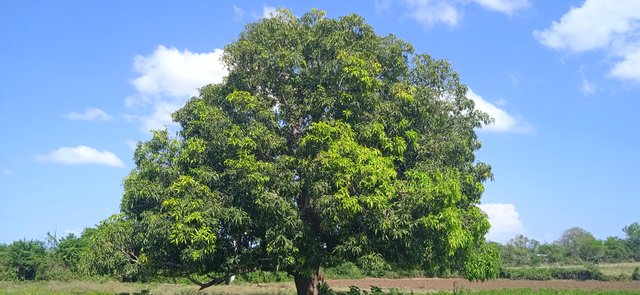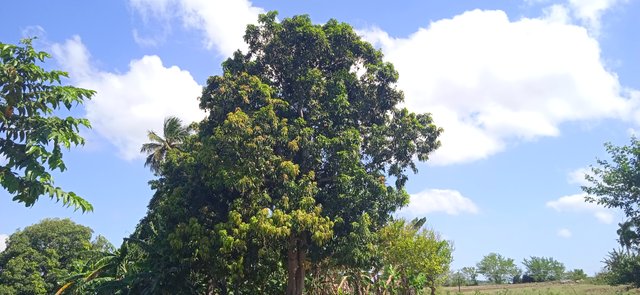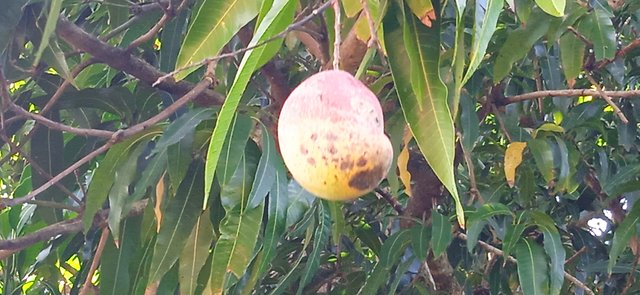Mango season. Some of the local plants
Hello, how are you all? Today I'm bringing you a post about mangoes. In my country or in my area, it's already mango season, and I wanted to tell you a little about this wonderful fruit. My family has a mango tree that was several years old when I was born. It's now in better shape than ever, as it's located in a place where, when it rains, water accumulates, making this area a little more fertile than usual.
The humid area allows for better plant development.Therefore, whenever this tree begins to produce mangoes, its blossoms are already strong, which prevents the wind from blowing them away. In each country, the mango variety is known by different names. In this case, I call this mango "stone mango," as it's full of fibers but has an intense flavor. One recognizable feature of this mango is that you peel it against a stone or something sturdy so that the flesh falls out inside the peel, so you don't have to worry about it. Another quality of this mango is that its skin is super hard, which is why this recipe is perfect.
This is the mango plant bone along with the mango
We also have another variety, which is the complete opposite of the pit mango. It's called the juicy mango, and as its name suggests, this mango is known for its high concentration of juice, which is perfect for making juices and smoothies. On the other hand, its skin is delicately soft, which makes it less difficult to fall from the tree. When I've gone to pick mangoes, very few are good because almost all of them are, so to speak, broken on one side. These plants grow to over 16 meters tall, and the mangoes, when they fall, are crushed by such a height.
This is the juicy mango tree with its fruit
Well, in my case, I love them. I've been eating them since I was born and I've really enjoyed them. In this post, you'll be able to see the trees and the mangoes through photos, which will be arranged to fit the structure of the post.
Now I'd like to share some interesting facts about this fruit. It's native to Asia and is a truly tasty and juicy tropical fruit. It's also known for its origins in mountainous areas of India, Bangladesh, and Myanmar. It has been cultivated for over 4,000 years. It's been cultivated for a long time, hasn't it?
It's also considered the national fruit of the three countries mentioned above. Furthermore, the heaviest mango in the world weighs 3.5 kg and has a circumference of 49.53 cm. Mangoes have an unexpected family, which includes some nuts such as pistachios and cashews.
Some of its benefits include being rich in vitamins A, C, and E, as well as fiber and potassium. It has antioxidant properties that help improve digestion.
Well, that concludes the interesting facts. If you'd like, feel free to comment on the names of some types of mangoes in your country to learn more. This fruit has a good variety. If I had other types of mangoes planted, I would talk about them, but I only have that type.
Although I don't have any other types of mangoes planted, I know many more, like the banana mango, which is shaped similar to a banana, and many more.
Well, that concludes my post for today. I hope you enjoyed it, and I'll see you next time.




What a delightful and informative post honestly I loved learning about the different mango varieties and how they grow in your area i must say that your passion for mangoes truly shines through and thank you for sharing such rich details and vibrant photos.
Thank you so much for being so honest with your comment. I will continue to strive to upload better and better posts.